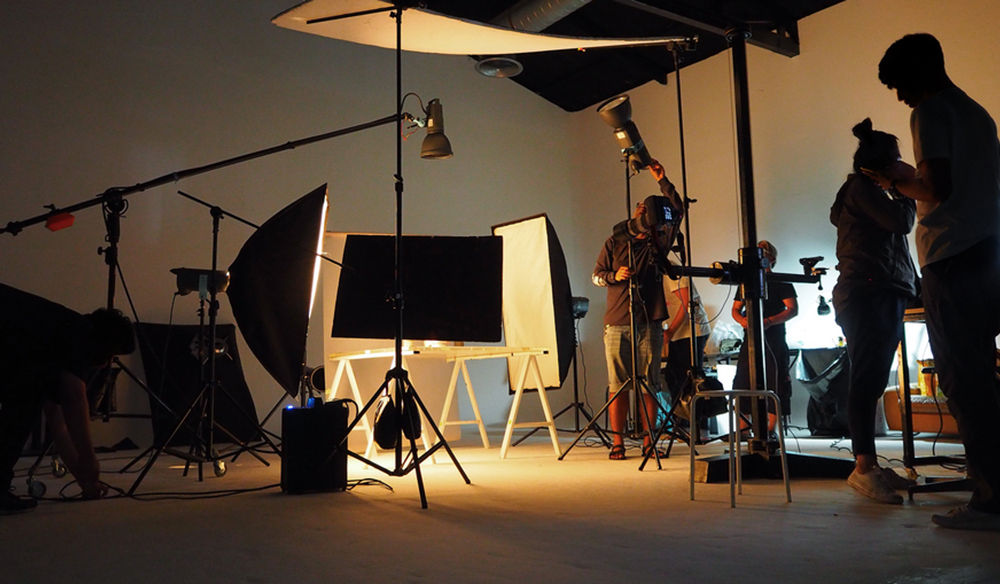If you desire to become a filmmaker and are looking for the right path to enter and understand the filmmaking industry, you have stumbled upon the right article.
This article will guide you through steps that you need to take to become a successful filmmaker. Whether you’re interested in cinematography, art direction or something else in the film industry, it is crucial to understand and explore the various options available and make an informed decision. We are here to help you out with that.
If your interest lies in the field of cinematography, we will first understand the roles and responsibilities of a cinematographer and then proceed towards how to become one.
Cinematography is one of the most valuable and influential jobs on a film set; they are the people who make the director’s vision come to life. It is their artistic eye that captures the right moments, expressions, scenes and emotions. Their technical know-how and creativity are what makes a film unique and appealing to the audience.
A Cinematographer is also known as a director of photography (shortened to DP or DoP). They are responsible for creating the look of the film. A cinematographer works with the camera and the lighting team to make sure that they capture the action the way that the director is intending it to.
Let’s learn in detail what a cinematographer does.
1) Generate Ideas
Before production, cinematographers work closely with the film director, the film production designer and the rest of the art department heads to get the look, feel, and storytelling techniques for the film. During this phase, directors of photography will understand the tonality of the film, the colour palette, inspiration, references, special effects, etc. Directors and cinematographers often communicate with each other during this phase using mood boards or lookbooks.
2) Search Locations
The DOP accompanies the location manager or location scout to explore locations for the film. In this case, a cinematographer’s job is to survey the location for its natural light (or if they need more lighting), its space and set up, and whether or not it is in line with the aforementioned visual look of the film.
3) Prepare the right camera and equipment
The DP gives the line producer a list of required camera equipment (that includes cameras, lenses, filters, and film stock) to rent or purchase.
4) Building a trustworthy team
Many DPs have built a team they can trust through working on many different projects and will often work with the same camera crews and lighting crews from film to film. They also work with the line producer to hire and fill out the film crew. The primary positions that interact with the DP the most include the camera operator (also known as the cameraman), the 1st and 2nd assistant camera, the gaffer, and the key grip.
Many filmmaking schools offer training in cinematography. Here are some ways that you can become one:
- Pursue a certificate or a degree course:
Aspiring cinematographers can profit exceedingly from enrolling in film school. You can opt for a short filmmaking course that provides an opportunity to study the technical side of a cinematography career, occupy yourself in film studies, and equip a network of future coworkers or employers. There are several degree and certificate programs, including a short online course in cinematography. Such a program will often give students a summary in all aspects of filmmaking, including lighting techniques, film & video production, and directing. You’ll also meet peers working in sound, lighting, and video editing who you may end up collaborating with in the future. There are some downsides to film school—they’re usually not affordable, for one thing—but attending can increase your ability to get entry level cinematographer jobs in the film industry.
- Get on set experience:
Spending time on a film set is a valuable way to involve yourself in the process of filmmaking and observe the best cinematography practices. If you can’t instantly find a job as a cinematographer, that’s okay: most cinematographers of feature films and TV shows began as production assistants and worked their way up the ladder through hard work and dedication. Even if you’re working on the sets of low-budget short films or indie music videos, the time spent on set will give you an inestimable introduction to lighting and camera equipment like steadicams, as well as the overall practice of filmmaking. Get involved with your local film scene and research which sets are looking for PA’s.
- Get technical knowledge:
You don’t need access to a big budget movie set or an expensive film school to practice the art of cinematography. You need to be fluent in how to manipulate light, color, and shadow, and should be extremely familiar with the equipment required to do so. Use your phone camera and experiment with the look of different lighting equipment. Practice shooting at different times of day to see how it affects your image. Listen to podcasts, watch Youtube videos or read articles with cinematographers you trust. There’s always a way to hone the skills necessary for a career that you desire.
- Network and socialize:
Even if you’re the most talented and gifted cinematographer in the world, people will not know you unless you put yourself out there and socialize. Try to attend social gatherings, screening and events with other professionals in the industry. Jump at the opportunity to take up freelancing gigs that can help you meet people. Make sure you have a website or an up-to-date social media profile. It’s important that people know where to find you and can easily access your work.
Apart from all of the above pointers, it is extremely crucial that you choose an institute that is the right form of education, has learned and experienced staff who can hand-hold you and mentor you in your journey of becoming a cinematographer. Whether it is a full time or an online short course in cinematography, the institute plays a role in building your filmmaking circle, so make sure you choose the right one.




